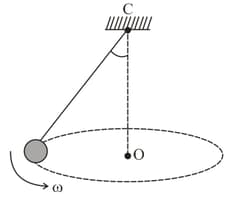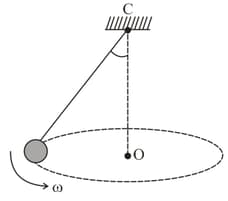Embibe Experts Solutions for Chapter: Rotational Mechanics, Exercise 1: Exercise-1
Embibe Experts Physics Solutions for Exercise - Embibe Experts Solutions for Chapter: Rotational Mechanics, Exercise 1: Exercise-1
Attempt the practice questions on Chapter 10: Rotational Mechanics, Exercise 1: Exercise-1 with hints and solutions to strengthen your understanding. Alpha Question Bank for Medical: Physics solutions are prepared by Experienced Embibe Experts.
Questions from Embibe Experts Solutions for Chapter: Rotational Mechanics, Exercise 1: Exercise-1 with Hints & Solutions
A mass is moving with constant velocity along a line parallel to -axis beyond origin. Its angular momentum about the origin:

A body is rotating with angular momentum If is its moment of inertia about the axis of rotation, its kinetic energy of rotation is
A constant torque acting on a uniform circular wheel changes its angular momentum from to in second. the magnitude of this torque is:
A conical pendulum consists of a simple pendulum moving in a horizontal circle as shown. is the pivot, the centre of the circle in which the pendulum bob moves and the constant angular velocity of the bob. If is the angular momentum about point , then

A conical pendulum consists of a simple pendulum moving in a horizontal circle as shown. is the pivot, the centre of the circle in which the pendulum bob moves and the constant angular velocity of the bob.

The motion of planets in the solar system is an example of the conservation of
A particle is in a uniform circular motion in a horizontal plane. Its angular momentum is constant when the origin is taken at
A circular wooden loop of mass and radius rests flat on a horizontal frictionless surface. A bullet, also of mass and moving with a velocity strikes the loop and gets embedded in it. The thickness of the loop is much smaller than The angular velocity with which the system rotates just after the bullet strikes the loop is

